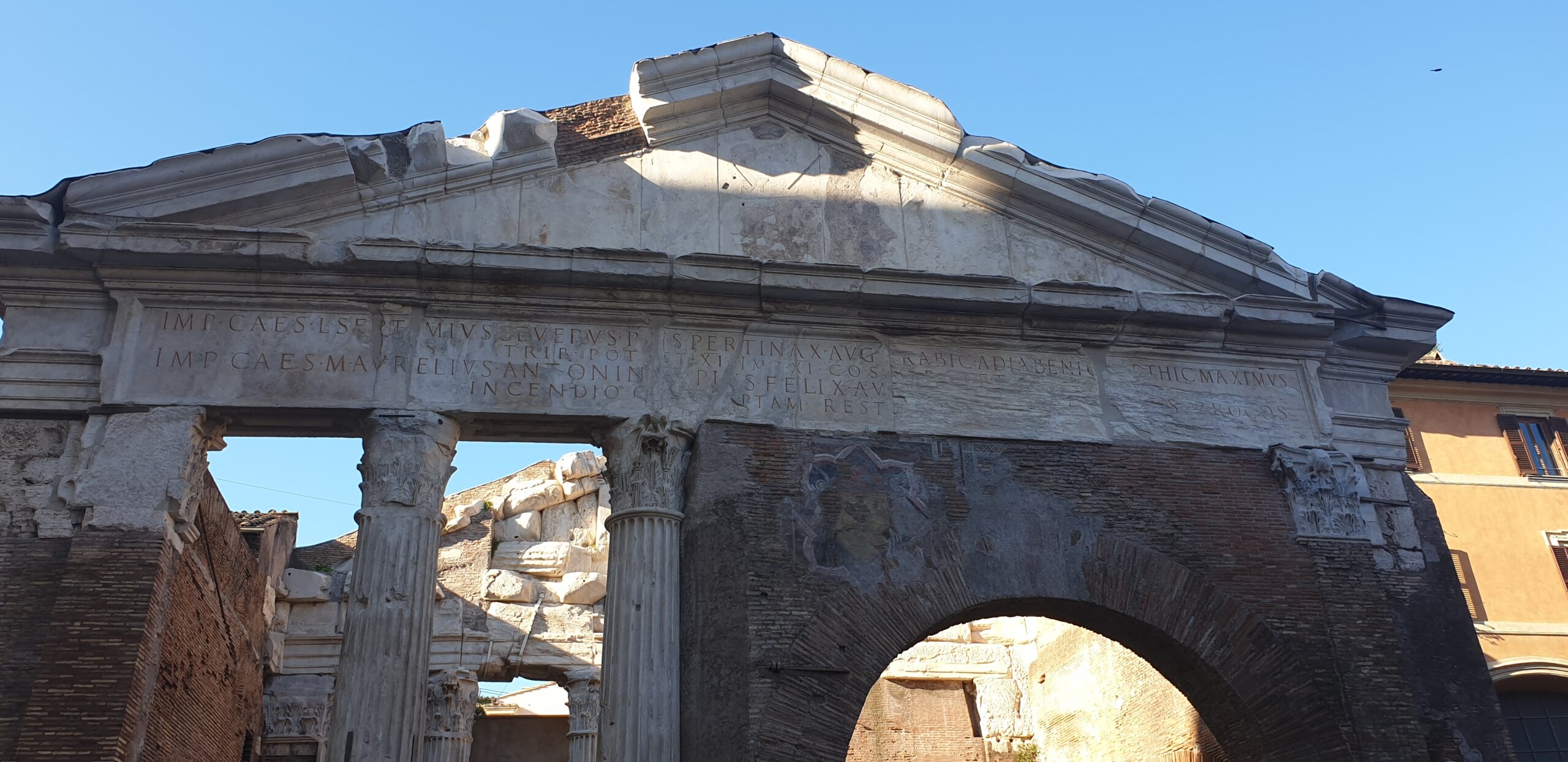Official Name: OCTAVIA MINOR
Birthdate: Disputed, likely born between 69 and 66 BCE.
(Suetonius, Life of Julius Caesar, 27)
Birthplace: Nola, Italy.
Reign: Octavia’s younger brother, Octavian, became Rome’s first emperor in 27 BCE.
(Suetonius, Life of Augustus, 17)
Marriages:
Gaius Claudius Marcellus (? – 40 BCE)
(Suetonius, Life of Julius Caesar, 27)
Mark Antony (40 BCE – 33 BCE)
(Plutarch, Life of Antony, 57) (Cassius Dio, Roman History, 50.3)
Children:
Claudia Marcella Major (daughter by Gaius Claudius Marcellus)
Claudia Marcella Minor (daughter by Gaius Claudius Marcellus)
Marcus Claudius Marcellus (son by Gaius Claudius Marcellus)
Antonia Major (daughter by Mark Antony)
Antonia Minor (daughter by Mark Antony)
(Suetonius, Life of Augustus 63) (Plutarch, Life of Antony, 87)
Death: Octavia died of natural causes in 11 BCE.
(Suetonius, Life of Augustus, 61)

Statue identified as Octavia, National Archaeological Museum Naples, Italy, October 2019

Portrait of Octavia, Palazzo Massimo alle Terme, Rome, December 2018.
Octavia was the elder sister of Octavian, later known as Augustus, the first emperor of Rome. She had a close relationship with her brother, serving as his advisor and confidant throughout her life. Octavia was married to some of Rome’s most influential men and played a significant role in the power struggles of the late republic and early Imperial periods.
Octavia was born between 69 and 66 BCE. Around 54 BCE, in her early teens, she married Gaius Claudius Marcellus, a wealthy senator. Despite pressure from her great-uncle Julius Caesar to divorce Marcellus and marry Pompey, Octavia and her husband refused to separate. Their marriage lasted until Marcellus’ death in 40 BCE, and they had three children together: Claudia Marcella Major, Claudia Marcella Minor, and Marcus Claudius Marcellus.
In 40 BCE, at the urging of her brother, Octavia married Mark Antony. This marriage helped solidify the Second Triumvirate, a power sharing agreement among the two men. Octavia played a key role in maintaining the alliance, even helping negotiate a truce in 37 BCE when tensions threatened to end the partnership. Octavia and Antony had two daughters, Antonia Major and Antonia Minor. Antony, however, was an unfaithful husband. He spent much of his time with Cleopatra, the queen of Egypt, with whom he had three children.
In 33 BCE, Antony divorced Octavia and expelled her from his home in Rome. This act fueled Octavian’s propaganda campaign, portraying Antony as a traitor to Rome for abandoning his virtuous Roman wife for a foreign queen. The animosity between Octavian and Antony led to civil war. In 31 BCE, at the Battle of Actium, Octavian defeated the forces of Antony and Cleopatra and became sole ruler of the Roman Empire. A year later, both Antony and Cleopatra committed suicide, leaving Octavia to care for their three orphaned children. She took them into her household in Rome, raising them alongside her own children.
As the sister of the emperor, Octavia enjoyed rights and privileges normally reserved for Roman men. She could manage her own affairs and finances without needing to consult a male guardian and was honored with public depictions on coins and statues. Despite her prominent status, Octavia retreated from public life after the death of her son Marcellus in 23 BCE.
Octavia died of natural causes in 11 BCE. She was honored with a state funeral and laid to rest in the Mausoleum of Augustus. She was granted many posthumous honors by her brother and the Roman Senate, and the Porticus of Octavia was built in her memory.
40
(Plutarch, Life of Antony 57) (Cassius Dio, Roman History, 50.3)
27
(Cassius Dio, Roman History, 49.38)
11
(Suetonius, Life of Augustus, 29) (Cassius Dio, Roman History, 49.43)
This content is brought to you by The American Institute for Roman Culture, a 501(C)3 US Non-Profit Organization.
Please support our mission to aid learning and understanding of ancient Rome through free-to-access content by donating today.
Cite This Page
Cite this page as: Darius Arya, The American Institute for Roman Culture, “Octavia” Ancient Rome Live. Last modified 12/13/2024. https://ancientromelive.org/octavia/
License
Created by The American Institute of Roman Culture, published on 09/08/2021 under the following license: Creative Commons: Attribution-NonCommercial-ShareAlike. This license lets others remix, tweak, and build upon this content non-commercially, as long as they credit the author and license their new creations under the identical terms. Please note that content linked from this page may have different licensing terms.


